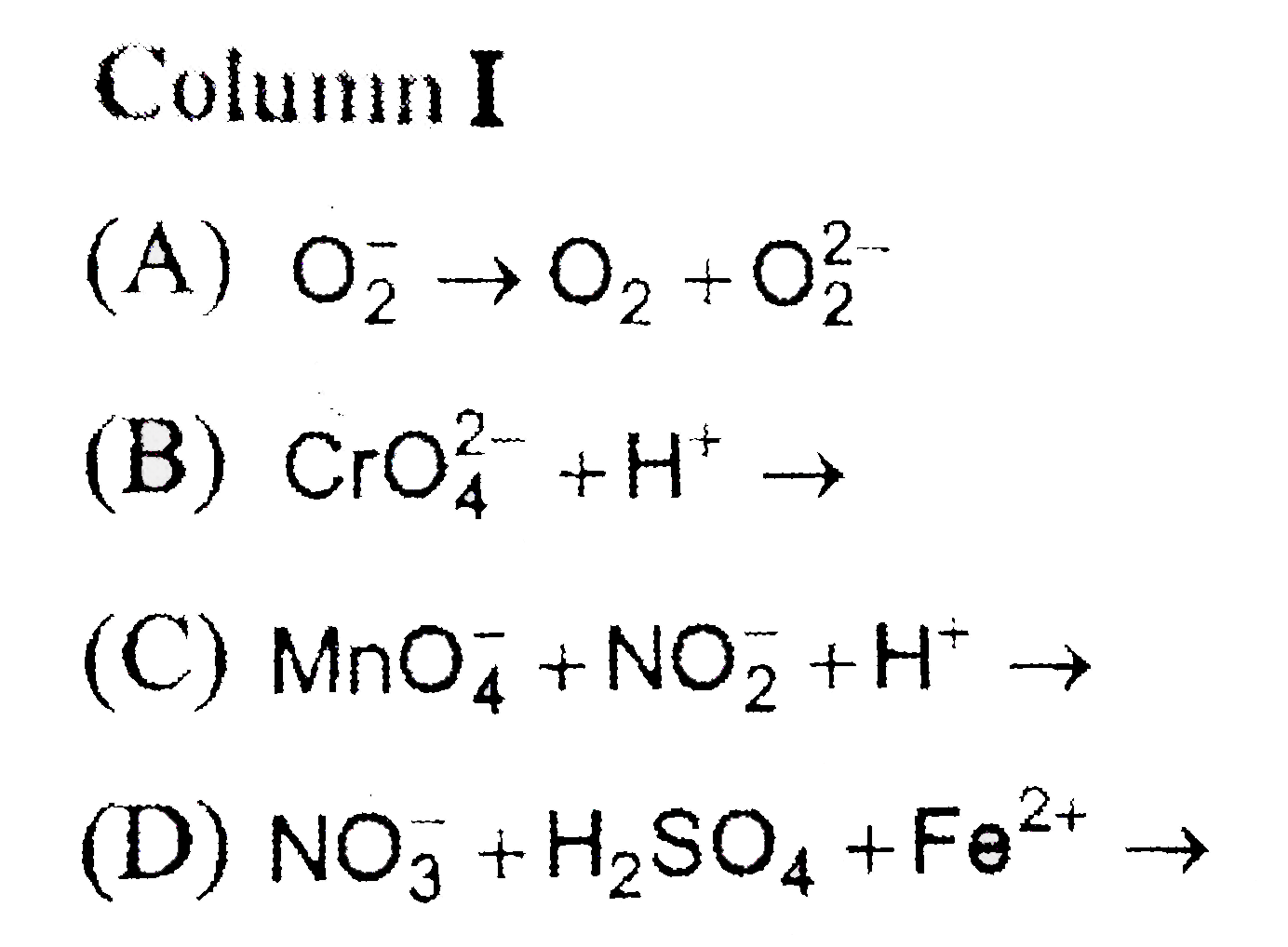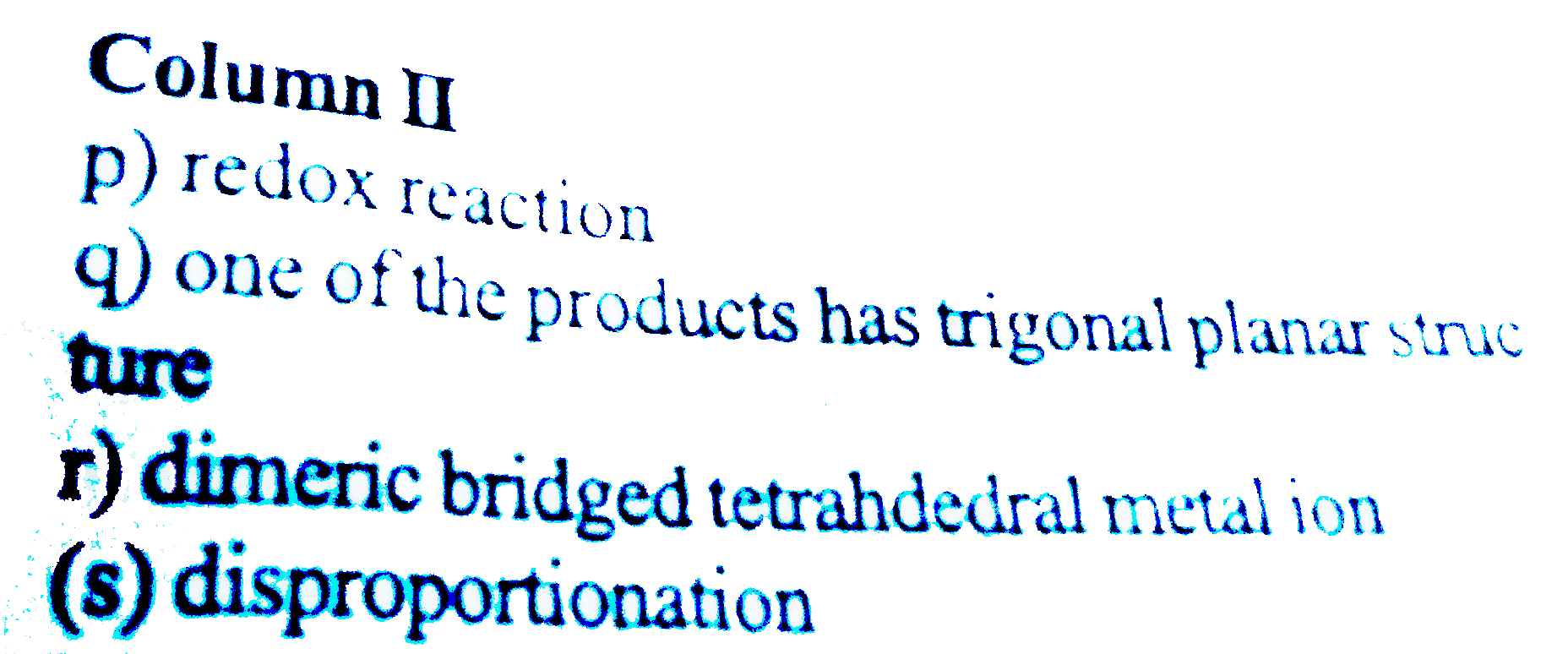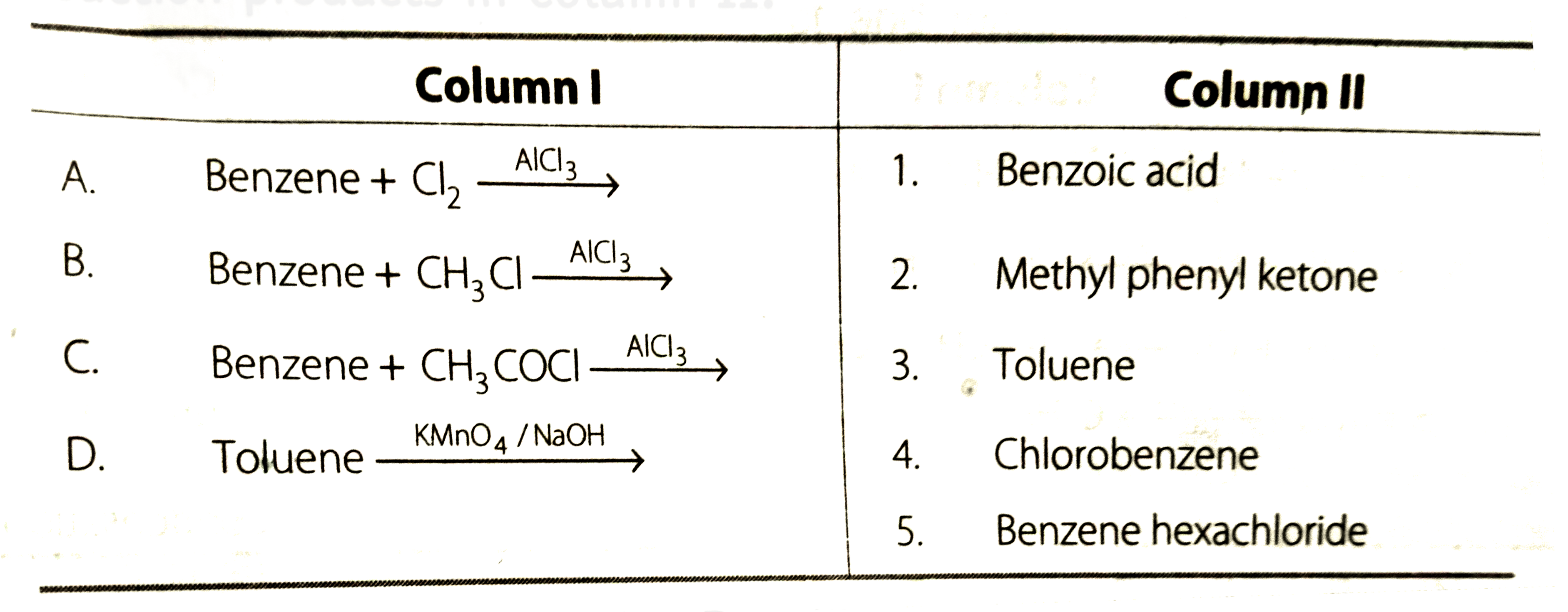Match the reactions in Column I with nature of the reactions / type of the products in Column II.


O−2→O2+O22 (p) redox reaction
CrO2−4+H+→ (q) One of the products has trigonal planar structure
MnO−4+NO−2+H+→ (r) dimeric bridged tetrahdedral metal ion
NO−3+H2SO4+Fe2+→ (s) disproportionation
The correct Answer is:(A−p,p,s);(B−r);(C−p,q);(D−p)
Conceptual
Topper's Solved these Questions
- CHEMISTRY OF HEAVY METALSBOOK - NARAYNACHAPTER - CHEMISTRY OF HEAVY METALSEXERCISE - Integral
4 Videos
- CHEMISTRY OF HEAVY METALSBOOK - NARAYNACHAPTER - CHEMISTRY OF HEAVY METALSEXERCISE - Level VI
14 Videos
- CHEMISTRY OF HEAVY METALSBOOK - NARAYNACHAPTER - CHEMISTRY OF HEAVY METALSEXERCISE - Passage viii
3 Videos
- CHEMISTRY IN EVERYDAY LIFEBOOK - NARAYNACHAPTER - CHEMISTRY IN EVERYDAY LIFEEXERCISE - ASSERTION & REASON TYPE QUESTIONS
10 Videos
- CO-ORDINATE COMPOUNDS BOOK - NARAYNACHAPTER - CO-ORDINATE COMPOUNDS EXERCISE - Exercise-4
60 Videos
Similar Questions
Knowledge Check
Match the reactions in Column I with the types of products/the use of products in Column II.
 APQRS1324BPQRS3241CPQRS4312DPQRS4123
APQRS1324BPQRS3241CPQRS4312DPQRS4123
Match the reactions in column I with nature of the reaction/type of the products in column II.


View SolutionMatch the reactions in column I with nature of the reaction/type of the products in column II.


View SolutionMatch the reaction in Column I with nature of the reactions/type of the products in Column II.
Column IColumn II(A)AgNO3(aq)+I2(s)(excess)+H2O(l)→(p)Redox reaction(B)CrO2−4(aq)+H+(aq)→(q)One of the products has trigonal planar structure(C)MnO−4(aq)+NO−2(aq)+H+(aq)→(r)Dimeric bridged tetrahedral metal ion(D)NO−3(aq)+H2SO4(aq)+Fe2+(aq)→(s)Disproportionation(t)Colour of one of the products is due to charge transfer spectrum
View SolutionMatch the reactions given in column-I with nature of reactions/type of the products given in column-II

View SolutionMatch the reactions given in Column I with the reaction types in Column II.

View SolutionMatch the reactions given in Column I with the reaction types in Column II.

View SolutionMatch the follwing reactants in Column I with the corresponding reaction products in Column II.

View Solution

 .
.